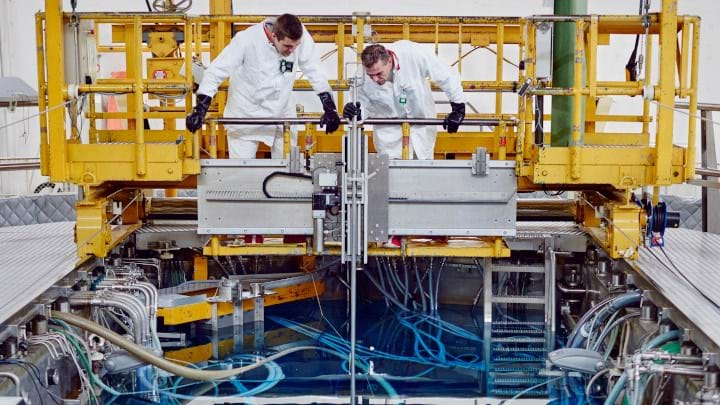Milestone for molten salt nuclear reactors

NRG, a nuclear research and consultation organisation, has reached a historic milestone in the development of molten salt reactors, having successfully concluded irradiation tests on molten nuclear fuel salts at the end of Q2.
Molten salt reactors are a class of nuclear fission reactors which use a molten salt mixture as the primary reactor coolant and/or the fuel. The technology is promising in terms of safety and economy and has the potential to avoid the release of long-lived radioactive waste in the case of severe accidents. Additionally, it could contribute to efforts to combat climate change.
NRG started its molten salt reactor research programme in 2015. The first experiment of the programme is the Salt Irradiation Experiment phase 1 (SALIENT-01), which aims to create a cleaner reactor fuel by removing noble metals from thorium fuel as it transmutes to uranium and undergoes fission.
NRG is collaborating with the European Commission’s Joint Research Centre (JRC) in Karlsruhe, Germany which developed the salt fuel comprising of lithium fluoride and thorium fluoride salts.
Irradiation, carried out inside NRG’s High Flux Reactor in Petten, the Netherlands, began in 2017.
SALIENT-01 is the first irradiation test of its kind since the 1960s and a vital step for the development of molten salt reactor technology. In SALIENT-02, researchers will use a different mixture of salts.
Ralph Hania, Researcher at NRG, said: “Completing our work inside the reactor means we can now examine the irradiated salt more closely in the NRG labs. This means we’ll really be able to see how the salt responds to irradiation in the reactor.”
Part of the post-irradiation investigation will be carried out in connection with the European research project SAMOSAFER, which aims to develop and demonstrate new safety barriers and more controlled behaviour in severe accidents for molten salt reactors.
Further irradiation projects are planned, including one scheduled for Q3 which aims to investigate the radiolysis of salts. In early 2020, NRG is to start experiments in its High Flux Reactor to examine the resistance to corrosion of candidate materials for the construction of the molten salt reactor. The research is unique and takes a step further to making molten salt reactors a reality.
Companies with salt-based reactor designs include Terrestrial Energy, which is receiving support from NRG for “in-core” materials testing and development of its Generation IV Integral Molten Salt Reactor power plant; Moltex Energy; and Advanced Reactor Concepts.
Recent Editions
Catch up on the latest news, views and jobs from The Chemical Engineer. Below are the four latest issues. View a wider selection of the archive from within the Magazine section of this site.




